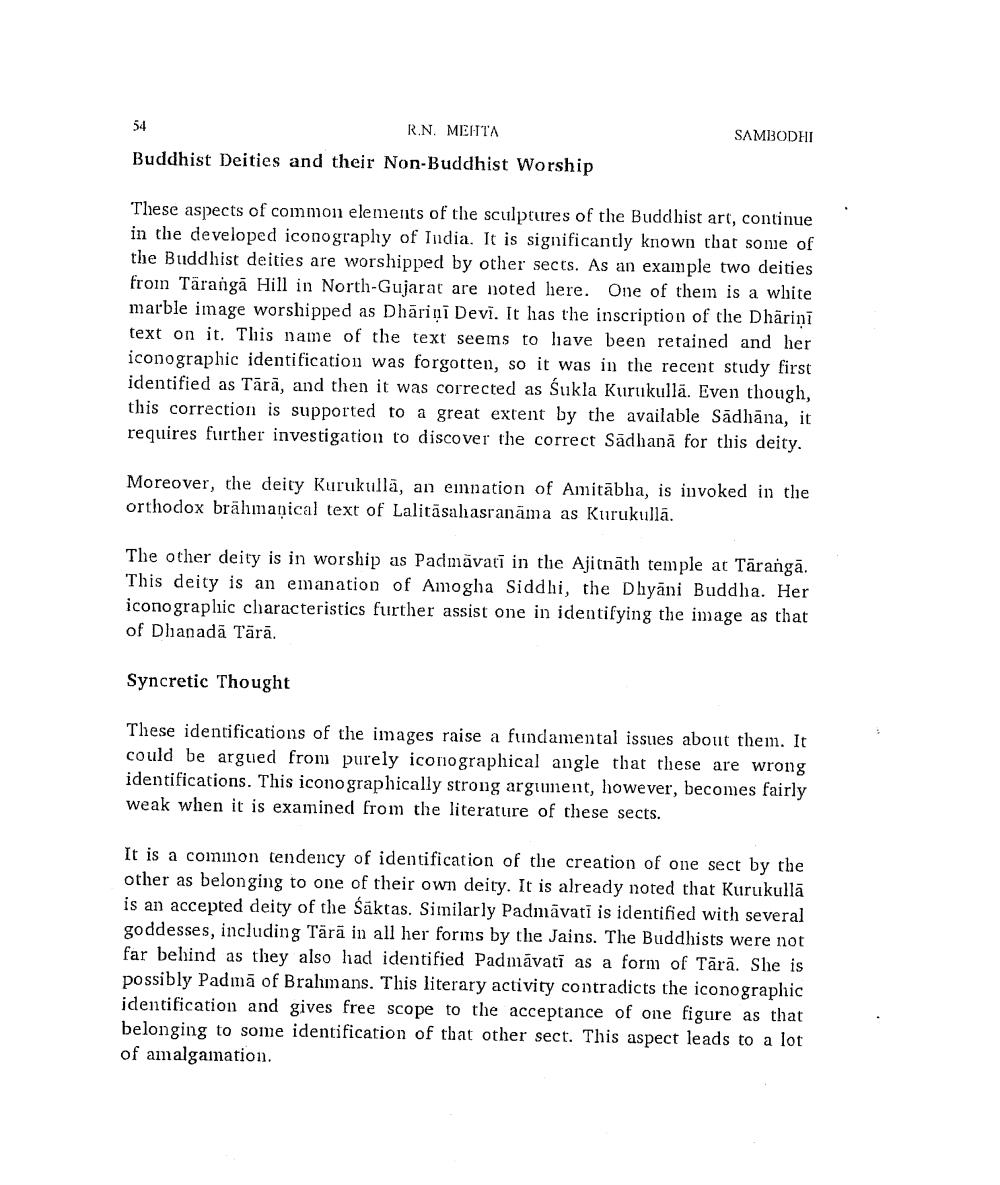________________
R.N. MEHTA
SAMBODHI
Buddhist Deities and their Non-Buddhist Worship
These aspects of common elements of the sculptures of the Buddhist art, continue in the developed iconography of India. It is significantly known that some of the Buddhist deities are worshipped by other sects. As an example two deities froin Tärangā Hill in North-Gujarat are noted here. One of them is a white marble image worshipped as Dhāriņi Devi. It has the inscription of the Dhāriņi text on it. This name of the text seems to have been retained and her iconographic identification was forgotten, so it was in the recent study first identified as Tārā, and then it was corrected as Sukla Kurukulla. Even though, this correction is supported to a great extent by the available Sadhāna, it requires further investigation to discover the correct Sadhanā for this deity.
Moreover, the deity Kurukulla, an emnation of Amitābha, is invoked in the orthodox brāhmaṇical text of Lalitāsahasranāma as Kurukullā.
The other deity is in worship as Padmavatī in the Ajitnāth temple at Tārangā. This deity is an emanation of Amogha Siddhi, the Dhiyāni Buddha. Her iconograpliic characteristics further assist one in identifying the image as that of Dhanadā Tārā.
Syncretic Thought
These identifications of the images raise a fundamental issues about them. It could be argued from purely iconographical angle that these are wrong identifications. This iconographically strong argument, however, becomes fairly weak when it is examined from the literature of these sects.
It is a cominon tendency of identification of the creation of one sect by the other as belonging to one of their own deity. It is already noted that Kurukulla is an accepted deity of the Sāktas. Similarly Padmāvati is identified with several goddesses, including Tärä in all her forms by the Jains. The Buddhists were not far behind as they also had identified Padmavati as a form of Tārā. She is possibly Padmā of Brahmans. This literary activity contradicts the iconographic identification and gives free scope to the acceptance of one figure as that belonging to some identification of that other sect. This aspect leads to a lot of amalgamation.




